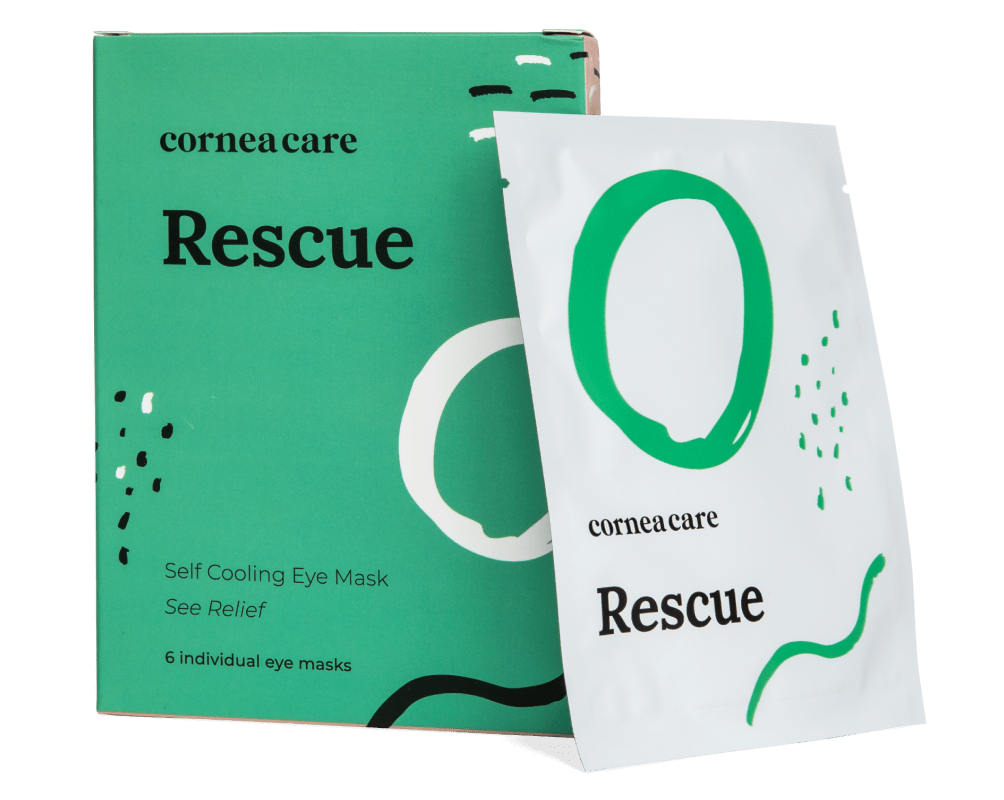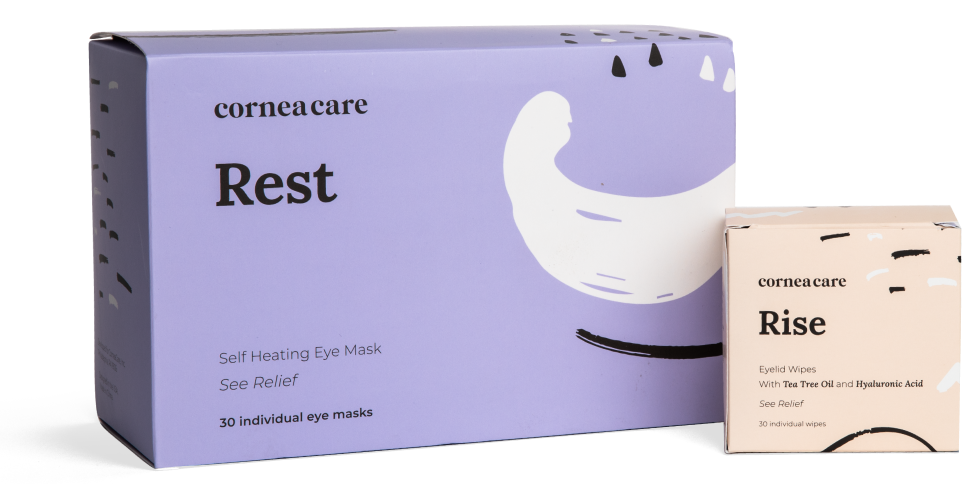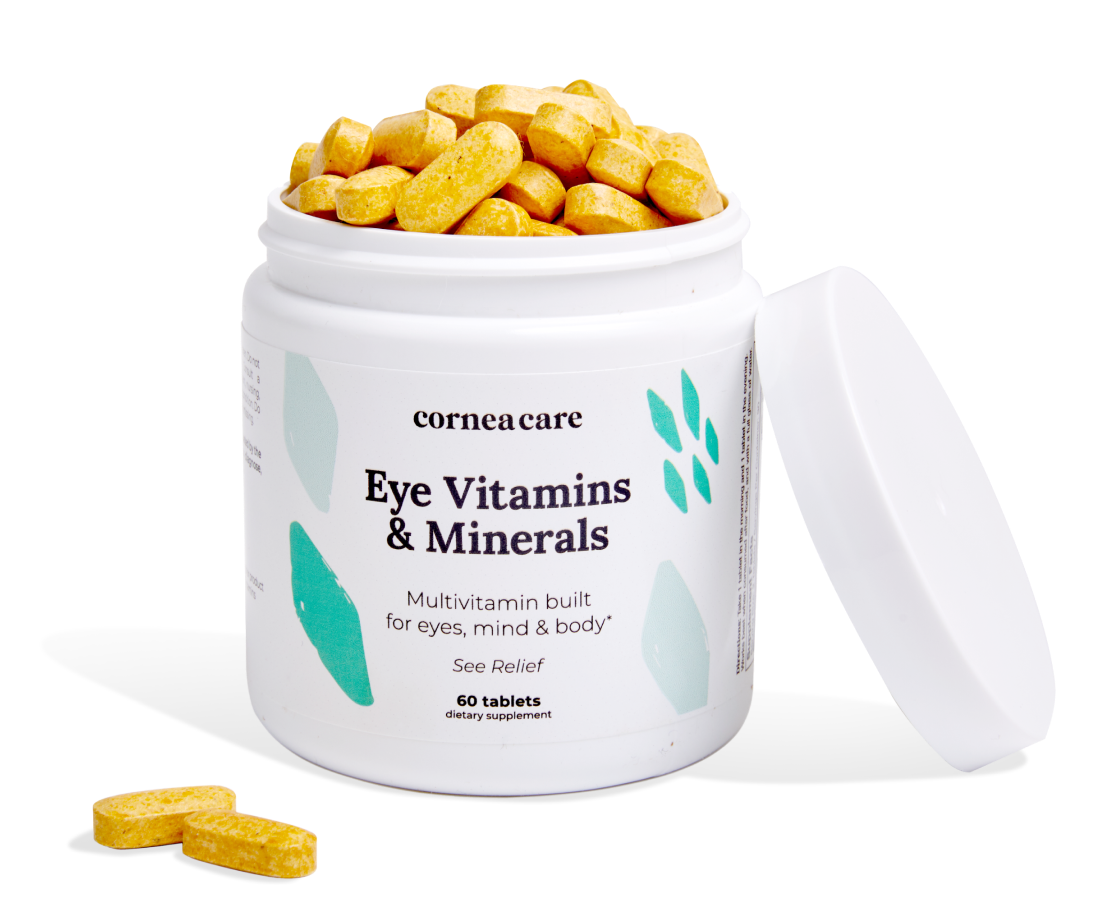What’s this Green Discharge in My Eye?
Green discharge from the eye can be concerning. Let’s chat about what might be causing abnormal discharge, how to treat it, and when to see your eye doctor. You’re not alone in wondering what this means and CorneaCare is here to help clear things up.
Key Points
- Green eye discharge is often a sign of an eye infection, such as conjunctivitis,1 and can be treated with eye drops or home care remedies like warm compresses.
- If your discharge is accompanied by eye pain, blurred vision, or sensitivity to light, it’s important to visit an eye doctor to rule out more serious conditions.
- Preventing eye discharge involves maintaining good hygiene, especially when handling contact lenses and pillowcases, to reduce the risk of infections and keep your eyes healthy.
What Does Green Discharge Mean?
Green discharge from your eye can be a sign of an eye infection, especially if it’s accompanied by other symptoms like eye pain, redness, or blurred vision. The green color suggests that your body is fighting off germs, and that can cause the discharge to look thicker and more noticeable. While it might sound alarming, it’s often one of the body’s natural ways to get rid of germs.
Most cases of green discharge are linked to conjunctivitis, also known as pink eye.1 Conjunctivitis is inflammation of the conjunctiva, the clear layer that covers the white of your eye and lines your eyelids. This condition comes in a few forms, so let’s break down the types to understand the difference.
Bacterial conjunctivitis
One of the most common causes of green discharge is bacterial conjunctivitis.1,2 This happens when bacteria get into the eye, often through touching your face with unclean hands, sharing towels, or even improperly handling contact lenses. If you’re waking up with your eyelids stuck together because of thick, sticky eye gunk (a mix of eye mucus and tears), it’s likely due to bacteria.
Treatment for bacterial infections typically involves antibiotic eye drops or ointments.2 Your doctor might recommend applying these directly to your eye to knock out the infection. While the drops will do the heavy lifting, you can also support your recovery with warm compresses (a washcloth soaked in warm water) to gently clean away any crusting from the corner of your eye.
Viral conjunctivitis
If your discharge is more watery and clear, you might be dealing with viral conjunctivitis. Like the common cold, this form of pink eye is more common and usually caused by a viral infection.3 Antibiotics won’t help here since it’s not bacteria doing the damage.
Viral conjunctivitis typically resolves on its own within a week or two, but in the meantime, it can be pretty uncomfortable. If your eyes are itchy, red, or sensitive to light, try using CorneaCare artificial tears or self-cooling cold compresses to relieve the irritation.3 A clean pillowcase can also help, especially if your eyes are watery at night.

Rescue
Cold Compresses
Perfect for sudden flare-ups of eye dryness, pain, burning, and swollen/inflamed eyelids. Free shipping 📦.
Try today - $12
Allergic conjunctivitis
For those of you with allergies, your eye discharge might not be an infection at all. Allergic conjunctivitis happens when your eyes react to allergens like pollen, pet dander, or dust mites.1 In this case, the discharge is often clear or white, but it can mix with your natural tears and take on a slightly green hue, especially if your eyes are swollen and irritated. With allergies, your eyes will likely be itchy as well.2
Over-the-counter antihistamine eye drops can help manage the allergic reaction.1 Along with the drops, staying away from triggers and using cool compresses can offer relief. If you wear contact lenses, you might want to switch to glasses until the irritation calms down.
Dry eye disease and other causes
You might be surprised, but even dry eyes can cause discharge. Dry eye disease happens when your eyes aren’t producing enough moisture, leading to irritation. The body tries to compensate, which sometimes results in excessive tearing and a thick, sticky eye gunk forming in the corner of your eye.1
Treating dry eye involves routine eyelid hygiene to reduce inflammation and using artificial tears to keep your eyes moist and comfortable. Adding CorneaCare omega-3 supplements to your diet can also help.4
Other eye conditions like blepharitis (inflammation of the eyelids), a blocked tear duct, or even a stye (a pimple-like bump on the eyelid) can also cause discharge.1 In some cases, you might see greenish or yellow goop, especially when there’s an underlying bacterial infection.
Keratitis and corneal ulcers
Sometimes, green discharge can point to something more serious, like keratitis or a corneal ulcer. Keratitis is inflammation of the cornea, the clear dome at the front of your eye, often due to wearing contact lenses for too long or improper eye care. If left untreated, it can develop into a corneal ulcer, which is essentially an infection on the surface of your eye.1
Both conditions are serious and require immediate attention from an eye doctor. Symptoms include:
- Severe eye pain
- Redness
- Light sensitivity
- Blurred vision
Your doctor may prescribe antibiotic eye drops or ointments to treat the infection and prevent any lasting damage to your vision.

Foundation
Eyelid Hygiene Plan 2
Perfect for eye dryness, burning, itching, crusting/flaking of eyelashes and inflamed eyelids. Free shipping 📦.
Try today - $45
Newborns and green eye discharge
It’s not just adults who deal with green discharge – newborns can experience it too. Often, the cause is a blocked tear duct, which prevents tears from draining properly, leading to goopy eyes.5
Gently massaging the tear duct and using a warm washcloth to wipe away any discharge can help, but always check with a healthcare provider if you notice persistent symptoms.
When to See an Eye Doctor
While green discharge can often be managed with home remedies and eye care routines, there are times when you’ll want to make an appointment with your doctor. Here are a few red flags:
- Eye pain or discomfort that doesn’t improve
- Blurred vision or difficulty seeing
- Sensitivity to light (photophobia)
- Thick green or yellow discharge that doesn’t go away
- Swelling or redness in the whites of your eyes
- Symptoms lasting more than a week
Your doctor can assess whether you’re dealing with conjunctivitis, a more serious condition like keratitis, or something else altogether.
How to Prevent Eye Discharge
Keeping your eyes clean and healthy is key to preventing the conditions that cause green discharge. Here are a few quick tips:3
- Wash your hands regularly, especially before you touch your face or eyes.
- Clean your contact lenses according to your doctor’s instructions, and never sleep in them unless they’re designed for extended wear.
- Use CorneaCare warm or cool compresses to soothe irritated eyes.
- Change pillowcases often to avoid contact with allergens and bacteria.
- Use CorneaCare eyelid wipes to keep your eyelids and lashes clean.
- Avoid sharing makeup or towels, which can spread infections.
- See your eye doctor for regular eye exams, especially if you wear contacts or have recurring issues with your eyes.
It’s important to note that bacterial and viral conjunctivitis are both highly contagious, especially in environments where close contact is common. To prevent spreading it, wash your hands frequently, avoid touching your face and eyes, and don’t share personal items like towels, makeup, or contact lenses. If you’re experiencing symptoms, it’s best to stay home and disinfect surfaces to keep others safe from infection.3

Multivitamin
Eye Vitamins & Minerals
A single multivitamin to address the nutritional needs of your eyes, mind and body. 📦 Free shipping.
Try today - $35
Green Discharge from the Eye FAQ
Green eye discharge is often due to an infection like conjunctivitis. To clear it up, start with warm compresses to gently clean the eye, and if it’s bacterial, your doctor might prescribe antibiotic eye drops. Be sure to keep your hands clean and avoid touching your eyes to prevent further irritation.
Yes, viral conjunctivitis can clear up on its own within a week or two. However, if it’s bacterial, you’ll need antibiotic eye drops to treat it. Regardless of the type, keeping your eyes clean and using artificial tears can help relieve symptoms while they heal.
Dry eyes usually cause irritation and excessive tearing, but not typically green discharge. If you’re seeing green, it might indicate an infection or another issue, so it’s best to check with your eye doctor to rule out anything serious.
Putting It All Together
Green discharge from the eye can be unsettling, but in most cases, it’s a sign of something manageable, like conjunctivitis or a minor infection. From over-the-counter eye drops and warm compresses to antibiotic treatments, most cases of eye discharge can be handled with the right care.
However, it’s important to stay aware of your symptoms. If you’re experiencing persistent eye pain, blurred vision, or thick, stubborn discharge, it’s time to check in with your eye doctor.
In most cases, green discharge is treatable and temporary. By paying attention to your symptoms and practicing good eye care, you’ll be on your way to clearer, healthier eyes in no time!
What’s Next
Read on to learn more about eye conditions:



